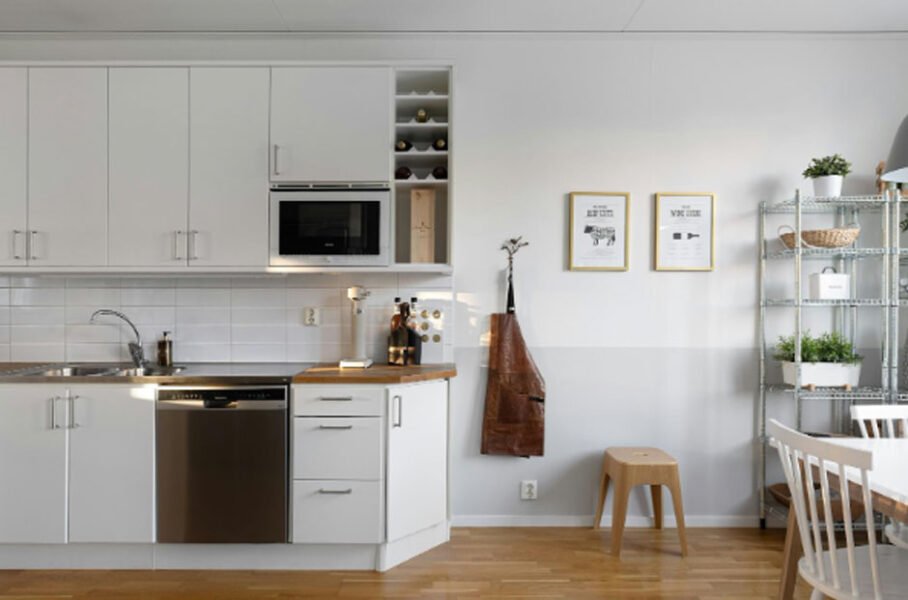Skip to the good bit
ToggleThe hum of a cozy kitchen often spells family, warmth, and togetherness. Yet, an ill-managed kitchen can easily become chaotic, turning meal preparation into a stressful endeavor. To prevent this, consider adopting efficient kitchen workflows that maximize productivity and enjoyment in your culinary space.
The Triangle Approach: A Timely Classic
In the world of kitchen design, the work triangle is as classic as a much-loved recipe. It’s a concept that focuses on the distance between the stove, sink, and refrigerator. Ensuring these three components are within a comfortable range of each other is vital. It not only prevents unnecessary steps but places everything you need within arm’s reach for a seamless cooking experience.
While observing the triangle approach, remember that personal preference and lifestyle should guide the layout. Families who enjoy frequent gatherings might prioritize a larger workspace near the refrigerator, ensuring easy access to chilled drinks and snacks. Conversely, a passionate baker may appreciate a closer proximity between the oven and sink for efficient cooling and cleanup. Customizing your work triangle according to your kitchen habits will amplify the usability and satisfaction of your workspace.
When contemplating the design and storage solutions for your kitchen, selecting kitchen cabinets for your home that align with your workflow can significantly enhance efficiency. Cabinets that offer clear organization contribute to an environment where cooking is both enjoyable and stress-free.
Open Shelving: A Clear Advantage
Moving away from concealed cabinets, open shelving is a trend gaining traction for good reasons. It promotes visibility and accessibility, allowing you to locate ingredients and utensils quickly. When items are grouped logically—spices visible, dishes in easy reach—it reduces the time typically wasted hunting through cluttered cabinetry.
Furthermore, open shelving offers the opportunity to showcase more than just functional items. Displaying curated collections of colorful crockery, shiny utensils, or vibrant glassware can introduce a delightful burst of personality and style into your kitchen. This not only stimulates a sense of pride and ownership in your culinary workspace but also creates an inviting atmosphere for guests and household members alike.
Limitations Breed Creativity
Feeling constrained by limitations in your kitchen can spark creativity. Working with what you have is key. Reassess tools and gadgets that haven’t seen the light of day in years. Donate or discard what you don’t use. Sometimes the tools we rely on most are the simplest—the ever-handy chef’s knife, a reliable frying pan, or a high-quality wooden spoon. Slim down your inventory and prioritize using items that you reach for daily.
As kitchens often come in various shapes and sizes, adapting to limited counter space can lead to innovative solutions. For instance, using magnetic strips to hang cutlery or installing pull-out boards for additional prep surfaces can make a great difference. It is by embracing these challenges that one can unlock unique, practical solutions tailored to their own kitchen needs.
Prep Like a Pro
Professional chefs emphasize the importance of food prep. Known as “mise en place,” or having everything in its place, it involves preparing and organizing ingredients before cooking begins. Adopting this approach in your home kitchen leads to smoother mealtimes. Chopping vegetables, measuring spices, and marinating proteins in advance turns a stressful scramble into a cooking breeze.
Stretching the concept of preparation beyond individual meals by organizing a weekly meal plan can transform your kitchen outlook. Start by listing items that can be prepped in large quantities, such as grains, proteins, and vegetables, and designate set days for specific culinary tasks. This thoughtful alignment of organization and planning alleviates daily decision-making pressure, freeing up time for leisurely meals.
Zones and Stations: Organize to Optimize
Consider dividing your kitchen into specific zones conducive to different cooking tasks. Establishments such as a baking zone with flour, sugar, and mixers; a chopping station with cutting boards and knives. This clear zoning approach optimizes time and effort—for every meal, you’ll know exactly where to head next.
Batch Cooking: Future-Ready Meals
Adopt the habit of cooking in bulk. Preparing meals for the week ahead reduces the repetitive cycle of daily cooking. It’s a strategy that’s particularly useful for sauces and soups, which freeze well. Allocate time to batch-cook your staples, and you’ll soon relish stress-free dinners, ideally suited for hectic workdays.
Batch cooking doesn’t only relate to entire meals; creating ready-to-use meal components, such as homemade stocks, roasted vegetables, or seasoning blends, enriches flavors for future culinary endeavors. It is a fulfilling practice where the time invested in one cooking session pays dividends in convenience and reassurance, knowing that nutritious choices are always within reach.
Clean as You Go
A cluttered kitchen can dampen even the most enthusiastic of spirits. As you cook, make cleaning an imperative part of the process. Wash pans as soon as you’re done with them and maintain a clear counter while cooking. A clean workspace not only boosts morale but also prevents accidents. Plus, no one enjoys facing a looming pile of dishes post-feast.
Conclusion
Reimagining your kitchen workflow can transform your cooking experience from tedious to a source of joy. With strong foundational practices, like the work triangle and the mindset of cooking in batches, you can host enjoyable, stress-free mealtimes. With a little planning and discipline, your kitchen becomes not just a place of nourishment but a wellspring of creativity and contentment.







